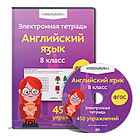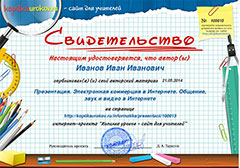Oqituvchilar va o'quvchilar uchun qollanma
Создайте Ваш сайт учителя Видеоуроки Олимпиады Вебинары для учителей
National castumes
Вы уже знаете о суперспособностях современного учителя?
Тратить минимум сил на подготовку и проведение уроков.
Быстро и объективно проверять знания учащихся.
Сделать изучение нового материала максимально понятным.
Избавить себя от подбора заданий и их проверки после уроков.
Наладить дисциплину на своих уроках.
Получить возможность работать творчески.
Просмотр содержимого документа
«National castumes»
Предмет: Английский язык
Категория: Планирование
Целевая
аудитория: 7 класс.
Урок соответствует ФГОС
Полезное для учителя
Распродажа видеоуроков!
1610 руб.
2690 руб.
1660 руб.
2770 руб.
1600 руб.
2660 руб.
1610 руб.
2690 руб.
ПОЛУЧИТЕ СВИДЕТЕЛЬСТВО МГНОВЕННО
* Свидетельство о публикации выдается БЕСПЛАТНО, СРАЗУ же после добавления Вами Вашей работы на сайт
Удобный поиск материалов для учителей
Проверка свидетельства
 @darsishlanmalari
@darsishlanmalari

 o you have a national costume in Britain?
o you have a national costume in Britain?




 P find the meaning of the words in the Wordlist and write them in their Ex.Bks with the translation.
P find the meaning of the words in the Wordlist and write them in their Ex.Bks with the translation.














